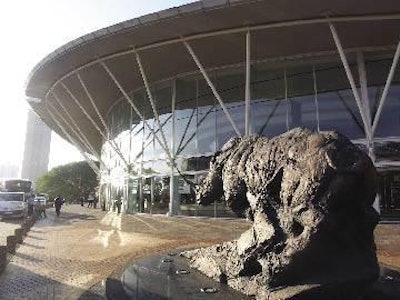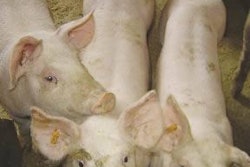
With attendance numbers exceeding even the organisers' most optimistic expectations and new records set for the presentation of the latest research, there was definitely an upbeat mood to the world congress of the International Pig Veterinary Society (IPVS) when its mid-year appearance marked the first-ever visit of the event to the continent of Africa.
IPVS holds its congresses every two years, always at a different location. This one held in the South African coastal city of Durban was the 20th in a series that started in 1969 and went biennial from 1972. Again this year, swine specialist veterinarians and researchers from around the world gathered for a global review of the hot topics in pig health.
Congress president Dr Peter Evans — a veterinary practitioner from South Africa — was able to report that 1,800 delegates had registered to attend, joined by 196 accompanying people and the 150 staff of exhibitors. Some 918 individual papers were accepted for presentation out of a total of 954 submitted. The simultaneous sessions of the meeting allowed 332 papers to be presented orally while the rest were shown as posters.
The calculations of the organising committee also found most reports at the congress (124) to be on the PCV2 circovirus, with 83 on PRRS and 51 on mycoplasmal infections. But while there was therefore an abundance of new material on viral and bacterial disorders of pigs, Dr Evans was disappointed that only 43 presentations dealt with nutritional aspects.
"In pig production, we are going to have to do more to address the interactions between nutrition and disease," he said.
A further challenge to future congress content, he added, had come from the relative shortage of papers about research into genetics and disease resistance.
Questions over circo identity
The PCV2 discussions in Durban seemed to echo a character in a famous play by William Shakespeare, except that the question was not "To be or not to be?" but instead became: "2B or not 2B?" At issue were the identity and relevance of a form of porcine circovirus that was unknown until a few months ago.
The South African congress maintained the tradition of past IPVS meetings by unveiling a new twist in the story on an important pathogen. Both PRRS and PCV2 have already been highlighted in the past. But now delegates were wondering whether the type-2 circovirus was as well understood as many had believed.
The European consortium on porcine circovirus diseases explained that gene sequencing of viral isolates had allowed three genotypes to be defined. To standardise nomenclature, the consortium has proposed naming them as PCV2a, PCV2b and PCV2c. The last of these (sometimes referred to simply as 2C) is more of historical than current interest because it dates back to a relatively innocuous virus detected in Denmark in the 1980s. With genotypes 2A and 2B, however, experimental evidence shows both are pathogenic, while there are also strong suspicions that they may be working together to give clinical disease.
However, experts continue to disagree over the connection between PCV2 and the wasting syndrome PMWS. The virus is acknowledged to be a causal agent, yet at the same time its presence has not always resulted in the worst effects among infected pigs. This has prompted some veterinary investigators to believe that a co-infection with a second pathogen is needed before severe cases can occur.
The word at IPVS 2008 was that this Factor X might be the second genotype PCV2b, or 2B for short. The idea gained credence through support from Dr John Harding — the Canadian veterinarian who described the first-ever PMWS incident and contributed to its naming, and later helped identify the circovirus responsible.
Dr Harding reminded the congress that type 2B had been identified in North America at about the same time as devastating outbreaks of PMWS had occurred in the same part of the world. He agreed that, from experimental indications, 2B did not seem capable of causing such damage when acting alone. But a joint team from Canada, USA and UK showed that a combined infection of PCV forms 2A and 2B can cause overt, clinical PMWS.
There could be serious consequences if the newly launched circovirus vaccines failed to protect against multiple virus genotypes. A more worrying aspect is the suggestion that circoviruses may be evolving because vaccines exert a further selection pressure on them.
We have seen a progression already. First there was a type 1 porcine circovirus that was considered ever-present and non-pathogenic. Then the Canadian experience in the mid-1980s gave a wake-up call that a type 2 existed and was leading to economically important disease. Subsequent retrospective testing of past specimens found type 2 (PCV2) in samples stored from decades earlier, so it was hardly new. But its impact on European herds during the 1990s was devastating, whereas North American effects were relatively mild until the sudden storm of piglet losses starting in 2001.
Geography continues to feature in the circo story. According to the European consortium, central Europe is "at the border of an established presence of PCV2 to the west and a still expanding epizootic to the east." The consortium says there has been promising progress looking for genetic links to an apparent natural resistance to the virus in some breeds. What is clear is that at least one gene has a big influence on disease development, although it is too early for this to form the basis for a genetic test in breeding stock selection.
NEXT MONTH: Salmonella, PRRS and successes in disease eradication.





.jpg?auto=format%2Ccompress&fit=crop&h=167&q=70&w=250)











